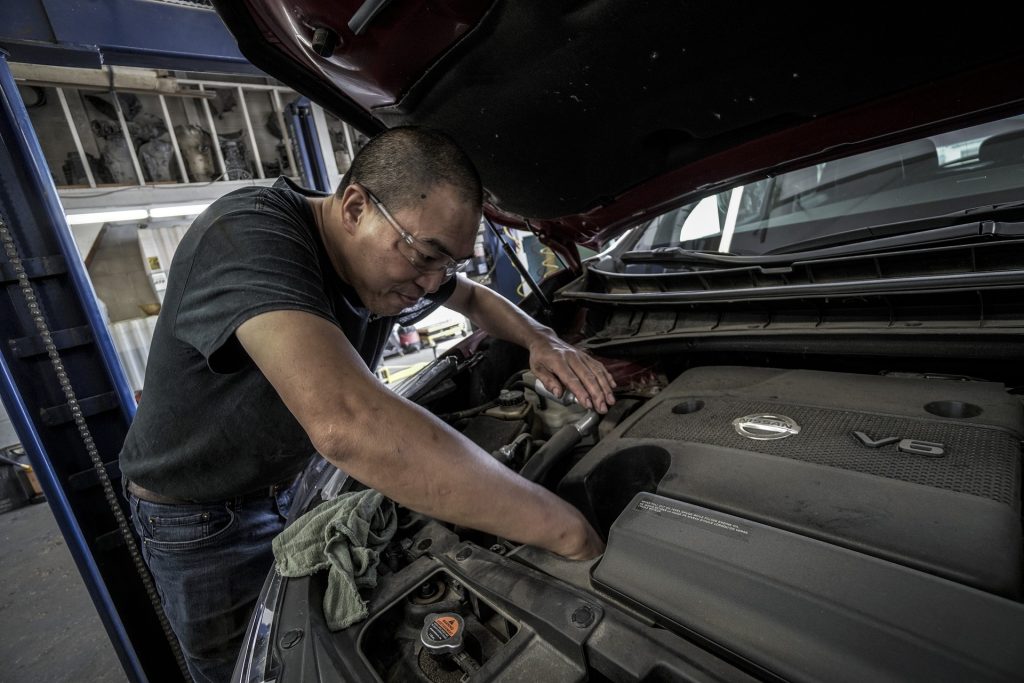Your Nissan engine operates most efficiently at 185 F to 220 F. A sustained high engine temperature, however, can damage sensitive engine components. The radiator is the centerpiece of an efficient cooling system that’s responsible for removing the heat to control the temperature. If your radiator is damaged, you need to visit your friendly Nissan dealer for repair. These are some signs that you may need a radiator repair.

Signs You Need a Radiator Repair at Your Nissan Dealer
Clogged Radiator
Coolant is pumped through your engine at high speed and absorbs the heat radiating from the engine components. The coolant then transports this heat to the radiator where the heat is removed by airflow over the radiator tubes. Once the heat is removed, the coolant flows out of the radiator and continues to circulate through the engine.
The coolant also absorbs dirt, rust particles, and other debris in your engine and transports this detritus to the radiator. When the heat is removed from the coolant, the debris brought into the radiator remains inside the radiator. Over time this debris can build up and clog the radiator, preventing the engine heat from being removed. We can fix this problem by removing and flushing it to remove any blockages.
Damaged Radiator Hoses
The radiator connects to the rest of the cooling system via two thick rubber hoses. These hoses are specifically designed to withstand the constant movement of coolant at an average temperature of 300 F. The rubber allows the coolant to move easily into the radiator as it can flex. In time, however, the high pressure and high temperatures will take their toll on the hoses.
Older rubber hoses lose their flexibility, and the lack of flexibility can result in damage. Cracks will appear in the rubber and can become deep enough to cause a leak. If this happens, highly pressurized coolant will spray into your engine. This break in the cooling system will also cause your engine to overheat. We’ll examine the hoses and can easily replace either or both hoses if they’re damaged.
Damaged Radiator Tubes
The front of your radiator is filled with parallel lines of thin aluminum tubes known as fins. As you drive, air flows in through the radiator grill and over the tubes, and this removes the heat. The thin aluminum construction of the tubes enables heat to be removed quickly and efficiently, but it also means that the tubes can become damaged.
Radiator tubes can be damaged by grit, sand, or other hard material drawn in through the grille. Damaged tubes reduce the surface area available for cooling the hot coolant, and if enough tubes are damaged your radiator will fail. We’ll examine your radiator and repair or replace it depending on the level of damage.
If your radiator seems to be failing, call us right away at Tony Nissan.
Image by Ryan Doka from Pixabay




